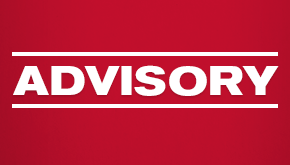A Cautionary Case on the Use of Model Disclosures by Financial Institutions
“A good template serves as a guide, not gospel. It must be adapted to fit the facts. That is what should have happened here.” – Hon. Stephanos Bibas
The District Court for the District of Delaware issued an opinion admonishing a Delaware credit union for failing to ensure a model disclosure accurately described its policies. (Miller v. Del-One Fed. Credit Union, No. 1:21-CV-01433-SB, 2022 WL 2817875 (D. Del. July 19, 2022)). The District Court’s finding serves as a warning to all financial institutions which utilize the model language of Regulation E in their disclosures or otherwise rely on model language provided by regulators.
In Miller, a credit union’s overdraft policy was more expansive than Regulation E’s definition of “overdraft” because the credit union’s policy considered upcoming bills when determining how much money was available in its customers’ accounts. Because of this, a customer could overdraft their account despite having sufficient funds to cover the expense – a situation which would not be considered an overdraft under the definition in Regulation E.
Upset that the model disclosure provided by the credit union did not accurately describe their policy and practice, the customer sued the credit union for violating Regulation E and Delaware’s Consumer Fraud Act.
The Court interpreted the requirement of Regulation E – that the credit union must give its customers “a notice in writing … segregated from all other information, describing [its] overdraft service” – to mean that all relevant information about the overdraft policy must be contained in the disclosure. For that reason, the Court found it irrelevant that the credit union accurately described its policy in other documents provided to the customer.
The credit union further argued it was protected from potential liability because it used the model disclosure language of Regulation E. However, the Court noted that Regulation E provides a shield from liability for allegations that the disclosure was not made in the proper form when financial institutions use the correct model clause. However, the Regulation does not provide a shield from liability for allegations that the substance of the disclosure was inaccurate, as was the case here.
In short, the Court allowed the customer’s claims to proceed against the credit union despite the fact that the credit union utilized the model language of Regulation E in its disclosure and found irrelevant the fact that the overdraft policy was described accurately in other documents provided to the customer. “If a bank charges overdraft fees only when the customer spends more money than she has in her account, the model language might be accurate.” In this case, because the credit union charged overdraft fees not only when the customer spent more money than was in the account, but also when a hypothetical overdraft might arise in light of upcoming bills, the disclosure was inaccurate despite the use of Regulation E’s model language and thus the credit union was potentially liable.
In light of this recent decision, financial institutions should heed the Court’s warning and review their use of model language to ensure it accurately reflects current policies and practices.
Armstrong Teasdale lawyers represent financial institutions in a wide range of regulatory, transactional and litigation matters, including advising on compliance matters involving Regulation E. Please contact your regular AT lawyer or one of the authors listed below for counsel regarding your specific situation.



































